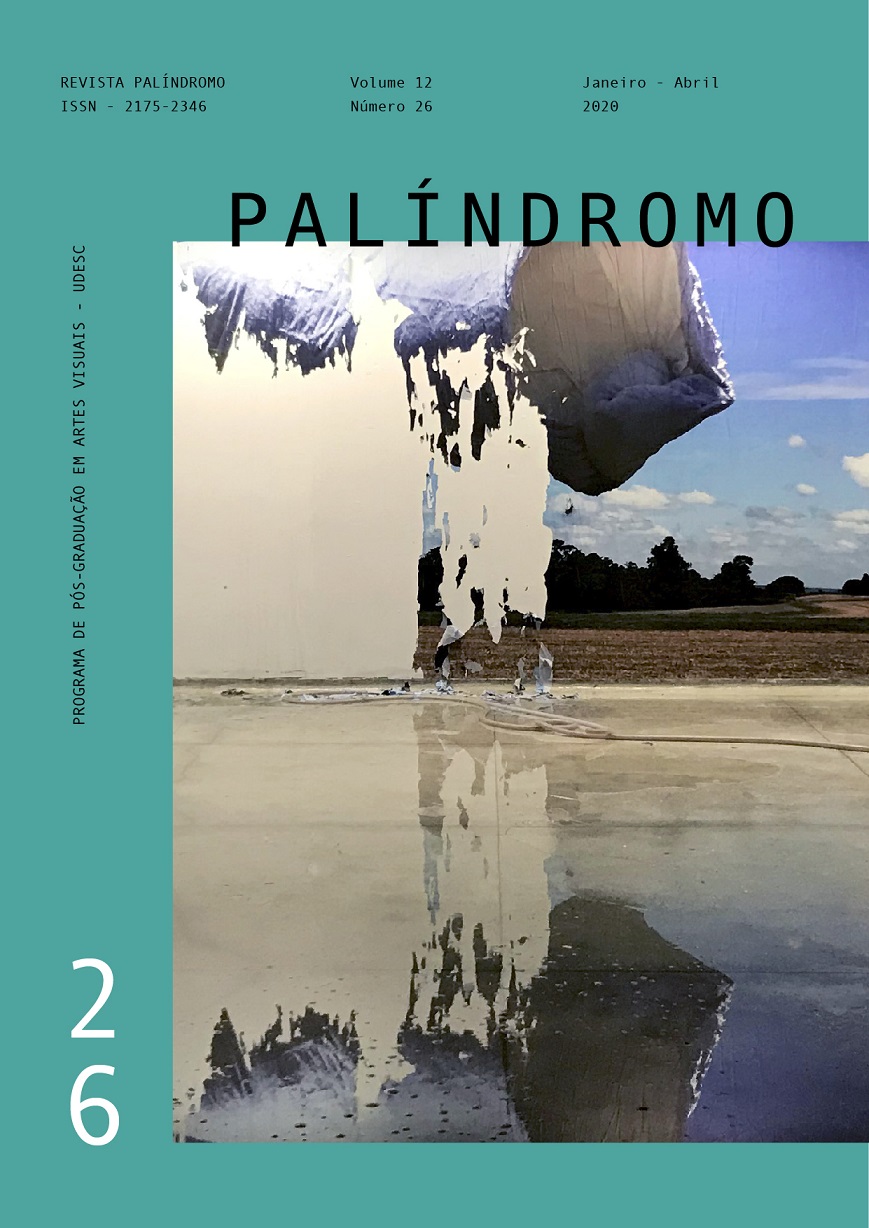The archive, this fearsome and seductive monster, is transparent and opaque: the learning histories of the visual artist Voluspa Jarpa
DOI:
https://doi.org/10.5965/2175234612262020227Keywords:
Voluspa Jarpa, archives, dictatorships, digital technologies, visibilitiesAbstract
This paper investigates the installation “Histórias de aprendizagem” of the chilean plastic artist Voluspa Jarpa Saldías, who undertakes the reading of the archive and its deconstruction, articulating a new interpretation of the past, but above all a different reading of the conception of History, understood as a discontinuity permeated by oblivion and erasure, because what is at stake is the very concept of historical truth. The research undertakes the search of the senses of silence as something that means and that is distinguished from the implicit, which needs the “saying” to put itself in the sense, being possible to think silence and erasure as agents of censorship that concern the which cannot be stated in certain circumstances.
Downloads
References
ARENDT, H. Ensayos de comprensión: 1930-1954. Madrid: Caparrós editores, 2005.
CRARY, J. Suspensões da percepção: atenção, espetáculo e cultura moderna. São Paulo: Cosac Naify, 2013.
DERRIDA, J. Mal de arquivo – uma impressão freudiana. Rio de Janeiro: Relume-Dumará, 2001.
DIDI-HUBERMAN, G. A imagem sobrevivente: história da arte e tempo dos fantasmas segundo Aby Warburg. Rio de Janeiro: Contraponto; Museu de Arte do Rio, 2013.
FOUCAULT, M. A ordem do discurso. São Paulo: Loyola, 2007.
FOUCAULT, M. A arqueologia do saber. Rio de Janeiro: Forense Universitária, 2008.
FOUCAULT, M. Qu'est-ce que la critique? Critique et Aufklärung. Conferência proferida em 27 de maio de 1978. Tradução de Gabriela Lafetá Borges e revisão de Wanderson Flor do Nascimento. Bulletin de la Société Française de Philosophie, vol. 82, n. 2, p. 35-63, avr/juin, 1990. Disponível em: http://portalgens.com.br/portal/images/stories/pdf/critica.pdf. Acesso em: 3.4.2018.
GIANVECCHIO, A. Presença na ausência: amnésias políticas e resistências poéticas na memória da ditadura civil-militar brasileira (1964-1981). Tese de Doutorado. 197 p. São Paulo: FAUUSP, 2015.
JARPA, V. Historia, archivo e imagen: sobre la necesidad de simbolizar la historia. Contra Corriente, v. 12, n. 1, 2014, p. 14-29. Disponível em: https://acontracorriente.chass.ncsu.edu/index.php/acontracorriente/article/download/1295/2219/. Acesso em: 20.10.2018.
JARPA, V. Diálogos de la memoria. Archivos para La Paz. Seminario Internacional. Centro de Memoria Historia. Disponível em: http://centrodememoriahistorica.gov.co/descargas/dialogos-memoria/ponencias/011-VoluspaJarpa.pdf. Acesso em: 20.10.2018.
KOSELLECK, R. A configuração moderna do conceito de História. In: KOSELLECK, R. O conceito de História. Belo Horizonte: Autêntica, 2013.
ROLNIK, S. Furor de arquivo. Disponível em: https://www.ppgav.eba.ufrj.br/wp-content/uploads/2012/01/ae22_Suely_Rolnik.pdf. Acesso em: 20.4.2019.
Downloads
Published
How to Cite
Issue
Section
License
Copyright (c) 2020 Palíndromo

This work is licensed under a Creative Commons Attribution 4.0 International License.
COPYRIGHT STATEMENT
The articles published by the magazine are free to use, intended for academic and non-commercial applications. Copyright is all assigned to the magazine. The articles whose authors are identified represent the expression from the point of view of their authors and not the official position of Palíndromo Magazine. The author (s) commits to whenever they publish material referring to the article published in Palíndromo mention this publication as follows:
This article was originally published by Palíndromo magazine in its volume (place the volume), number (place the number) in the year of (place the year) and can be accessed at: http://www.revistas.udesc.br/index.php/palindromo


